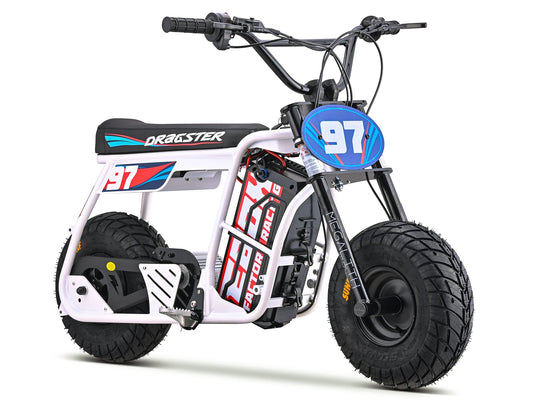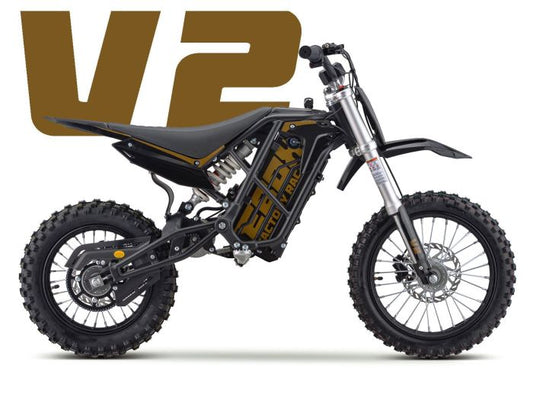Electric Bike Buying Guide 101: Your Ultimate Guide to Choosing the Perfect E-Bike

1. What is the Difference Between an E-Bike and an Electric Bike?
The terms "e-bike" and "electric bike" are often used interchangeably, but they generally refer to the same type of bicycle equipped with an electric motor. This motor assists the rider, either by providing power when the rider pedals (pedal-assist) or by using a throttle to propel the bike without pedaling. Electric bikes come in various styles and classes, each designed for different purposes and riding conditions. Understanding the distinctions among these types can help you choose the right e-bike for your needs.

Do You Still Have to Pedal an Electric Bike?
Yes, most electric bikes require pedaling. The electric motor provides assistance as you pedal, which makes the ride easier and less strenuous. This feature is particularly beneficial for commuting, long-distance travel, and riding uphill. However, some models, like the REVI Cheetah 750w Step Over Ebike, also offer a throttle mode, which allows you to ride without pedaling at all.
What are the Types of Electric Bikes?
Electric bikes are categorized based on their design and intended use:
- Fat Tire E-Bikes: Perfect for rugged terrains, sand, and snow. Examples include the MOKWHEEL Basalt 750w Step Over Ebike and the REVI Predator 750w Step Over Ebike.
- Mountain E-Bikes: Built for off-road adventures and rough trails, such as the SUPERHUMAN F5 500w Step Over Ebike.
- Cargo E-Bikes: Designed to carry heavy loads, ideal for deliveries. The REVI Runabout 2 750w Step Thru Ebike is a great example.
- Folding E-Bikes: Convenient for urban commuters who need easy storage. Check out the SUPERHUMAN Shapeshifter PRO 500w Folding Ebike.
- Cruiser E-Bikes: Built for comfortable, leisurely rides, like the Coastal Cruiser 52V 26 Thru 750W Step Thru Ebike.
Is Electric Bike Better Than Hybrid Bike?
Electric bikes have distinct advantages over hybrid bikes:
- Ease of Use: The motor assistance in e-bikes makes them suitable for riders of all fitness levels.
- Versatility: E-bikes are great for both commuting and leisure, whereas hybrid bikes are typically limited to urban environments.
- Longer Rides: E-bikes allow for longer, more enjoyable rides without the same level of physical exertion required by hybrid bikes.
By understanding these aspects, you can better appreciate the versatility and benefits of electric bikes. For more information on different e-bike models and their features, visit eBike Super Shop.
2. Which Class of E-Bike is Best?
What's the Difference Between a Class 1 and Class 2 E-Bike?
Class 1 e-bikes are pedal-assist only, with a motor that activates when you pedal and a top speed of 20 mph. Class 2 e-bikes feature a throttle mode, allowing you to ride without pedaling, also capped at 20 mph. An example is the REVI Flux 750w Step Thru Ebike.
What is Considered a Class 3 E-Bike?
Class 3 e-bikes are pedal-assist bikes that can reach speeds up to 28 mph, making them ideal for faster commutes and longer rides. The URTOPIA Carbon1 Pro 350w Step Over Ebike is a prime example.
Are E-Bikes Harder to Pedal Than Regular Bikes?
E-bikes are generally easier to pedal than regular bikes due to the motor assistance. This makes them particularly advantageous for riders who face challenging terrains or long distances. For instance, the MOKWHEEL Slate 500w Step Thru Ebike offers substantial pedal assistance, ensuring a smooth ride.
3. What are the Disadvantages of Electric Bikes?
Why Are E-Bikes Banned?
E-bikes are sometimes banned in certain areas due to safety concerns, high speeds, and lack of suitable infrastructure. It’s essential to be aware of local regulations and restrictions before using an e-bike.
What is the Main Advantage of an E-Bike's Design?
One significant issue with e-bikes is their weight. They are typically heavier than regular bikes due to the motor and battery. This can make them more difficult to transport or handle when not riding. For example, the REVI Predator 750w Step Over Ebike weighs significantly more than a standard bike, which could be a consideration for some users.
Do E-Bikes Hold Their Value?
E-bikes can depreciate more quickly than regular bikes due to the rapid pace of technological advancements. However, high-quality models from reputable brands tend to retain their value better.
4. Are Electric Bikes Worth It?
How Much is a Good E-Bike?
A good e-bike can range from $1,500 to $5,000, depending on features, brand, and build quality. For instance, the EBOX Dragster 2000w Micro Ebike is priced at $1,649. This model offers exceptional value with its powerful 2000w motor and a long-lasting 60v 18ah battery, capable of achieving speeds up to 28+ mph. Its robust design and fat tires ensure a stable and enjoyable ride, making it an excellent choice for those looking for performance and reliability in an electric bike.
Is It Harder to Pedal an Electric Bike?
Pedaling an electric bike is actually easier due to the motor assistance. This feature significantly enhances the ease of riding, especially when going uphill, against strong winds, or over long distances. The Himiway Rambler 500w Step Thru Ebike is a perfect example of this convenience, offering substantial pedal assist capabilities that ensure a smooth and effortless riding experience. With its powerful 500w motor and urban design, the Himiway Rambler makes commuting and leisurely rides more enjoyable and less physically demanding
Can an Electric Bike Go Uphill?
Yes, electric bikes are designed to handle inclines effectively. The motor assistance makes climbing hills much easier compared to traditional bicycles. E-bikes like the SUPERHUMAN F5 500w Step Over Ebike are specifically designed for tackling steep terrains with ease.
These eBike FAQs provide a comprehensive understanding of various aspects of electric bikes, along with product suggestions from eBike Super Shop. For more detailed information and to explore the full range of products, visit eBike Super Shop.
No comments











0 comments